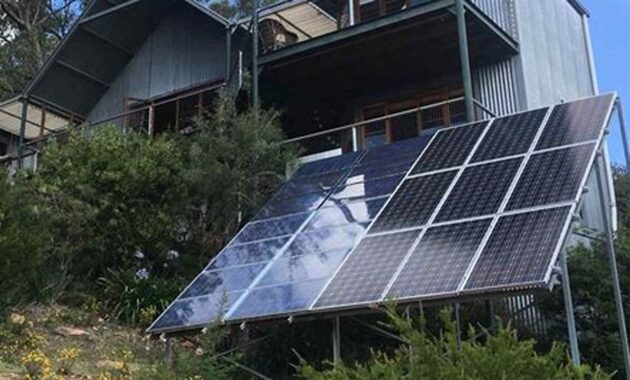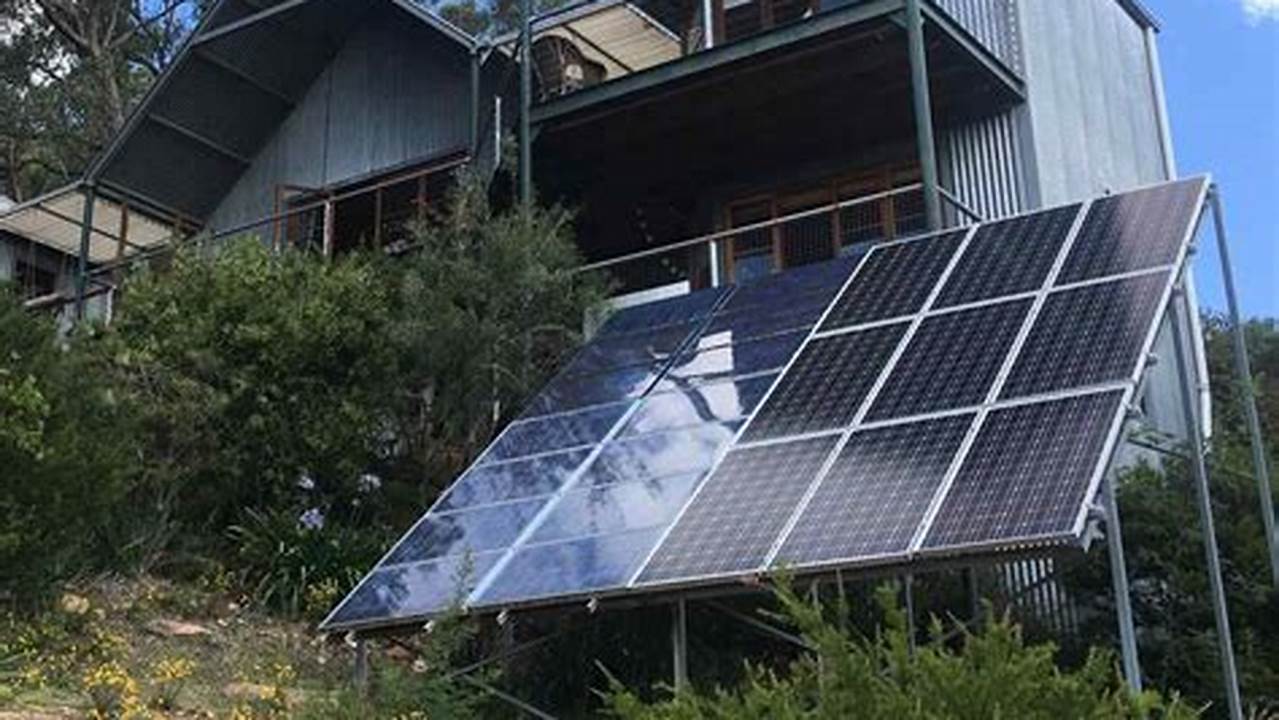
When considering alternative energy solutions, understanding the financial implications is crucial. Off-grid solar systems present a unique opportunity for reliable, sustainable power generation, but their upfront cost can be a significant factor. Determining “how much does an off-grid solar system cost” empowers homeowners and businesses to make informed decisions about their energy needs.
The cost of an off-grid solar system varies depending on several factors, including system size, component quality, installation complexity, and geographical location. On average, a complete off-grid solar system can range from $15,000 to $50,000 or more. However, these systems offer substantial benefits, including energy independence, reduced environmental impact, and potential long-term cost savings on energy bills.
Exploring the components of an off-grid solar system cost provides a clearer understanding of the investment involved. Solar panels, the primary component, account for a significant portion of the cost. The number of panels required depends on the desired energy output and sunlight availability. Batteries, essential for storing excess solar energy for use during periods of low sunlight, also contribute to the overall cost. Inverters, charge controllers, and mounting equipment further add to the expense.
FAQs
This section addresses common questions and concerns to provide a comprehensive understanding of off-grid solar system costs.
Question 1: What factors influence the cost of an off-grid solar system?
The cost is influenced by system size, component quality, installation complexity, and geographical location.
Question 2: What is the average cost range?
Complete off-grid solar systems typically range from $15,000 to $50,000 or more.
Question 3: What are the main cost components?
Major cost components include solar panels, batteries, inverters, charge controllers, and mounting equipment.
Question 4: Is an off-grid solar system a worthwhile investment?
Yes, off-grid solar systems offer energy independence, reduced environmental impact, and potential long-term cost savings.
Question 5: Are there financial incentives available?
In some areas, government incentives and rebates may reduce the upfront cost.
Question 6: How can I ensure I get the best value for my investment?
Conduct thorough research, compare quotes from reputable installers, and consider system quality and efficiency.
These FAQs provide insights into the costs associated with off-grid solar systems, empowering readers to make informed decisions about their energy needs.
Proceed to the next section for further exploration of off-grid solar system considerations.
Tips for Understanding Off-Grid Solar System Costs
Understanding the financial implications of off-grid solar systems is crucial for informed decision-making. Here are some tips to help you navigate the costs involved:
Tip 1: Determine Your Energy Needs
Assess your current and future energy consumption to determine the system size you require. This will impact the number of solar panels, batteries, and other components needed, ultimately affecting the overall cost.
Tip 2: Research System Components and Quality
Explore different solar panels, batteries, inverters, and mounting equipment options. Consider factors such as efficiency, durability, and warranty to ensure you invest in high-quality components that meet your needs.
Tip 3: Get Multiple Quotes
Obtain quotes from reputable solar installers to compare pricing and system designs. This allows you to evaluate different approaches and choose the best option for your budget and energy requirements.
Tip 4: Consider Long-Term Savings
While the upfront cost of an off-grid solar system may be significant, factor in the potential long-term savings on energy bills. Over time, you can offset the initial investment and enjoy reduced energy expenses.
Tip 5: Explore Financial Incentives
Research available government incentives, rebates, and tax credits that can reduce the upfront cost of your off-grid solar system. These incentives vary by location, so it’s essential to check for applicable programs.
These tips empower you to approach the cost of off-grid solar systems with a well-informed and strategic mindset. By considering your energy needs, researching components, comparing quotes, and exploring financial incentives, you can make an investment that aligns with your energy goals and financial situation.
Proceed to the conclusion for a summary of key takeaways and benefits of considering off-grid solar systems.
Conclusion
Understanding “how much does an off-grid solar system cost” empowers individuals and businesses to make informed decisions about their energy needs. Off-grid solar systems offer a unique opportunity for reliable, sustainable power generation, with long-term benefits that extend beyond the initial investment. While the upfront cost can be a significant factor, careful planning, thorough research, and strategic decision-making can help optimize the investment.
Exploring the various cost components, considering energy consumption, researching system quality, comparing quotes, and investigating financial incentives provides a comprehensive approach to understanding the financial implications of off-grid solar systems. By adopting a well-informed and proactive approach, individuals and businesses can harness the benefits of off-grid solar energy while making a sound financial decision that aligns with their energy goals and sustainability objectives.
